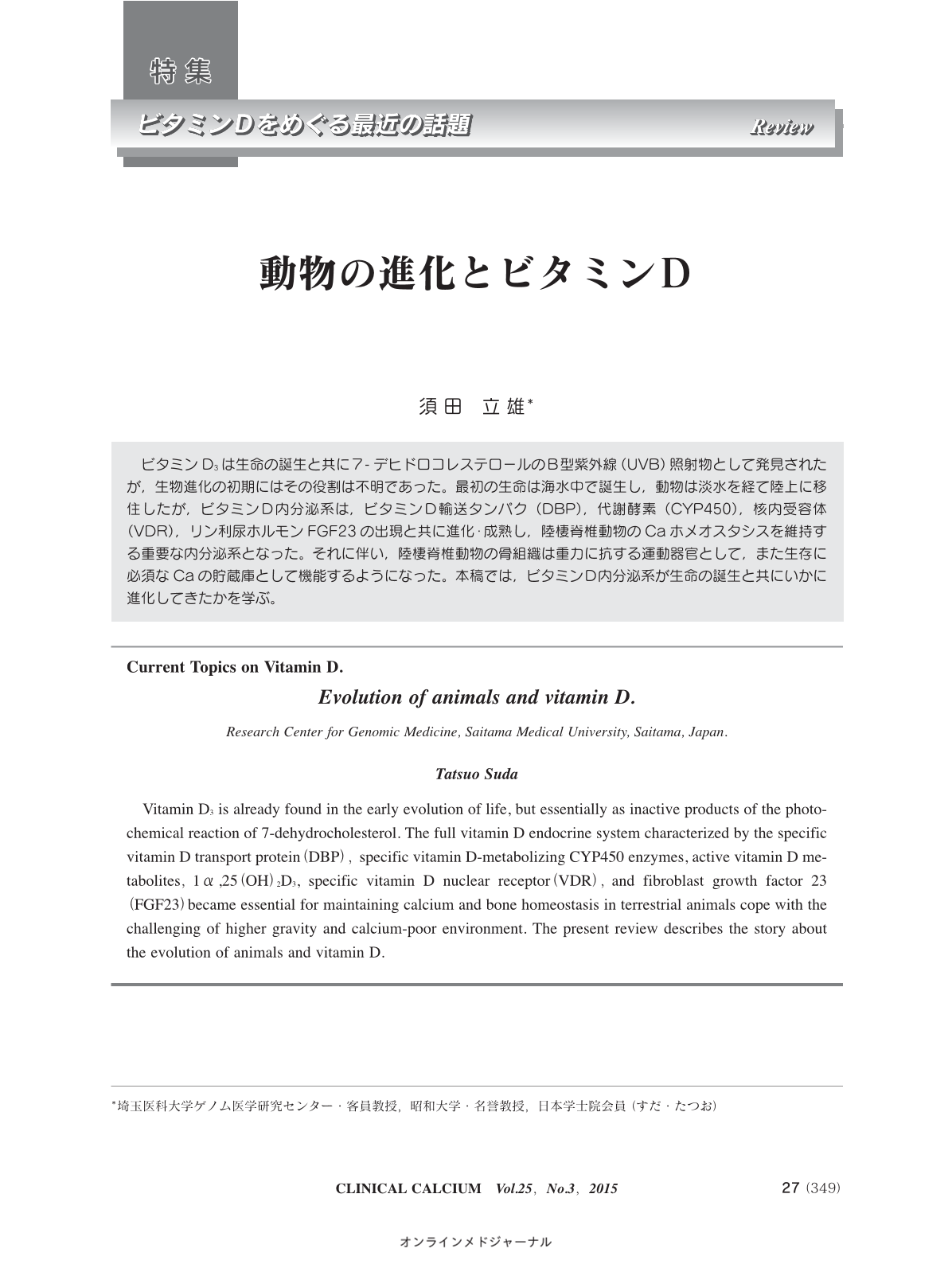Japanese
English
- 有料閲覧
- Abstract 文献概要
- 1ページ目 Look Inside
- 参考文献 Reference
ビタミンD3は生命の誕生と共に7-デヒドロコレステロールのB型紫外線(UVB)照射物として発見されたが,生物進化の初期にはその役割は不明であった。最初の生命は海水中で誕生し,動物は淡水を経て陸上に移住したが,ビタミンD内分泌系は,ビタミンD輸送タンパク(DBP),代謝酵素(CYP450),核内受容体(VDR),リン利尿ホルモンFGF23の出現と共に進化・成熟し,陸棲脊椎動物のCaホメオスタシスを維持する重要な内分泌系となった。それに伴い,陸棲脊椎動物の骨組織は重力に抗する運動器官として,また生存に必須なCaの貯蔵庫として機能するようになった。本稿では,ビタミンD内分泌系が生命の誕生と共にいかに進化してきたかを学ぶ。
Vitamin D3 is already found in the early evolution of life, but essentially as inactive products of the photochemical reaction of 7-dehydrocholesterol. The full vitamin D endocrine system characterized by the specific vitamin D transport protein(DBP),specific vitamin D-metabolizing CYP450 enzymes, active vitamin D metabolites,1α,25(OH)2D3, specific vitamin D nuclear receptor(VDR),and fibroblast growth factor 23(FGF23)became essential for maintaining calcium and bone homeostasis in terrestrial animals cope with the challenging of higher gravity and calcium-poor environment. The present review describes the story about the evolution of animals and vitamin D.



